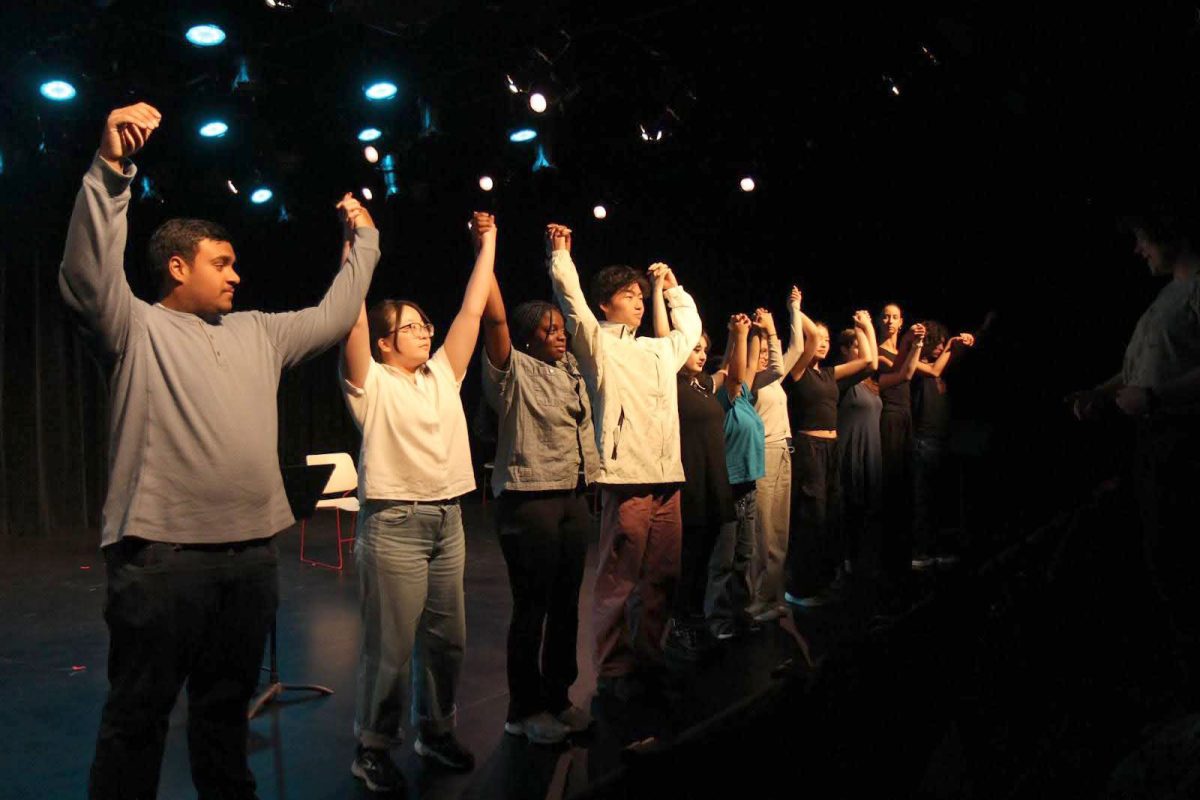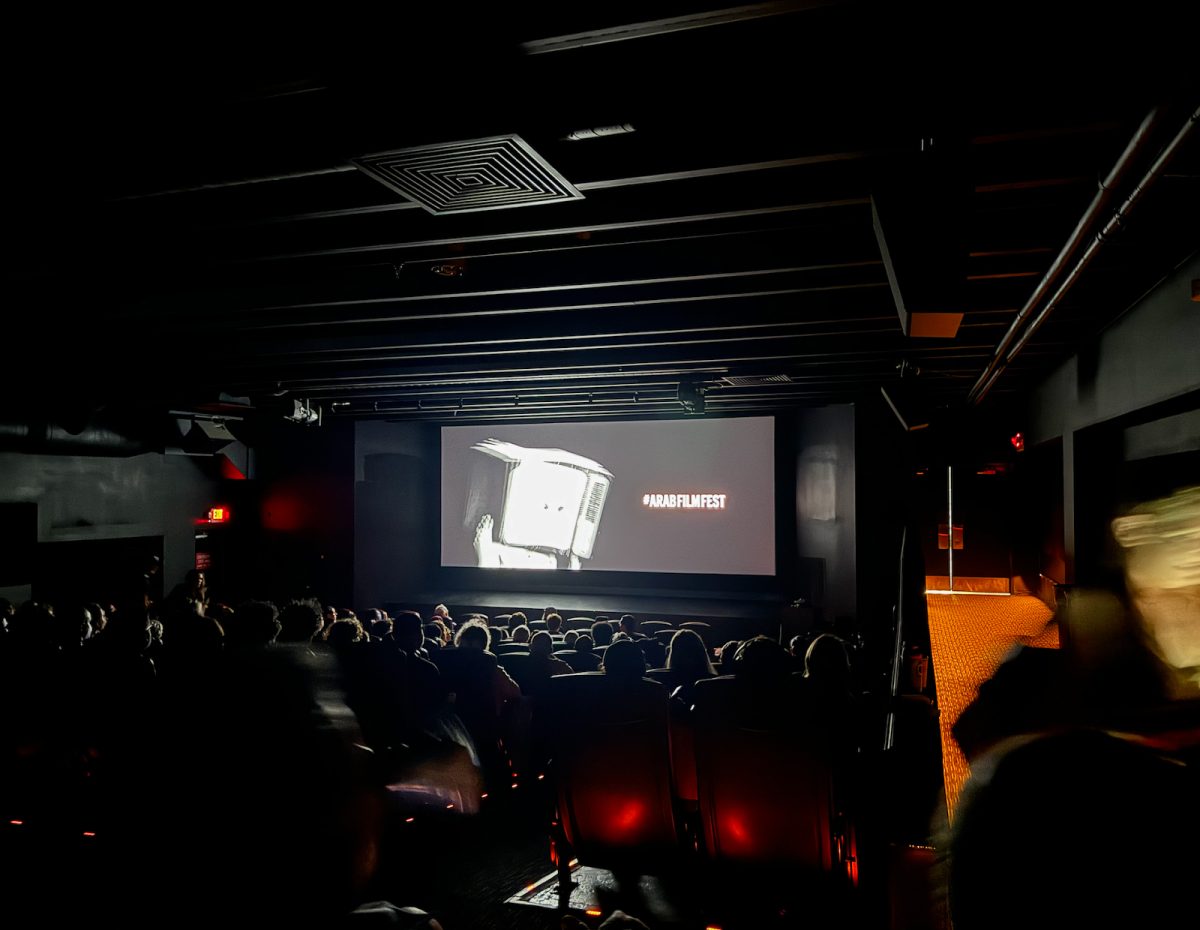
The Heidi Chronicles, a play about the women of the Boomer generation, opened Friday night at the Guthrie Theater in downtown Minneapolis. The play, which won the Pulitzer Prize in 1989, opens with the main character Heidi Holland giving a lecture on women in art. In the Guthrie production, Heidi refers to large screens high above her which show portraits. As she’s mentioning each detail, the screens zoom in, creating a distinct lecture hall feel. The rest of the production was equally atmospheric, from one character’s mustard yellow 1970s corduroy suit to the massive neon dragon hanging from the ceiling in a sushi restaurant scene. Though it sometimes seemed at odds with the rest of the scenes, the backdrop was a massive wall of stacked filing cabinets and bookcases. However, the scenery was very appropriate given that Heidi becomes an art history professor. The entire show was enhanced by the thrust stage, which placed the audience on three sides of the action.
Heidi Holland is a white middle-class woman growing up in the US during the turbulent 1960s and 1970s. The play shows her life in a series of vignettes. These begin with Heidi as a teenager at a high school dance, uncomfortably reading a book on the sidelines while her best friend looks for a boy to dance with, and end with Heidi, in her 50s, finally content with the part she played in the feminist movement. The play touches on many facets of United States’ history—the AIDS epidemic of the 1980s, Nixon’s resignation, the 1968 Eugene McCarthy campaign—but its primary focus is feminism. We see Heidi grow from a young student, comfortably dominated by her charismatic Jewish journalist boyfriend, to an edgy feminist art advocate, to an unmarried 40-something professor deeply confused by the patronizing pity of young “professional” women with high-end jobs and husbands. It is a very touching and very funny look at the 1960s Baby Boom generation, an important perspective as Boomers approach retirement.

For Mac students, Heidi is a character who is easy to identify with. She attends a small liberal arts college, fights for social justice, and goes into academia as an art history professor. We may not empathize precisely with the generation the play depicts, but every scene resonates with the audience. In one scene, Heidi argues with her best friend, a gay man, about whether he can attend a protest for women in art. She’s not sure how she feels. It’s an uncomfortable ambiguity many Mac students are familiar with. Her friend tells her off, though, saying that his crusade for gay rights is just as important as her fight for female equality. Though his argument might seem dated today, the idea of inclusion against injustices is ever relevant. The Heidi Chronicles spans a lot of issues and presents them in a funny and poignant manner. Regardless of your affiliations, your gender or your age, it’s assuredly thought-provoking and enjoyable.







Dorothy Bailey • Sep 12, 2019 at 5:11 am
wonderful post, very informative. I wonder why the other experts of this sector do not notice this. You must continue your writing. I am confident, you have a huge readers’ base already!
Faith Miller • Sep 10, 2019 at 10:29 pm
I learned more a new challenge on this fat loss issue. 1 issue is that good nutrition is extremely vital whenever dieting. A massive reduction in bad foods, sugary meals, fried foods, sweet foods, beef, and bright flour products could possibly be necessary. Keeping wastes parasites, and poisons may prevent objectives for shedding fat. While a number of drugs briefly solve the issue, the bad side effects will not be worth it, and they also never offer more than a short-lived solution. It’s a known idea that 95 of fad diets fail. Many thanks sharing your ideas on this site.
Robert Parsons • Sep 5, 2019 at 8:14 am
thanks to the author for taking his clock time on this one.